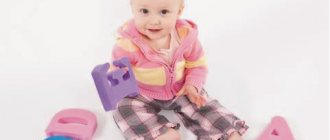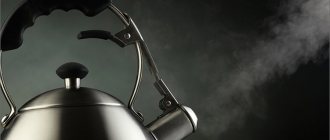Card file of exercises for the development of speech breathing in children card file on speech therapy on the topic
"Bulbulki."Take two transparent plastic cups. Pour a lot of water into one, almost to the brim, and pour a little into the other. Invite your child to play “bulbulki” using cocktail straws. To do this, you need to blow weakly through a straw into a glass with a lot of water, and you can blow strongly into a glass with little water. The child’s task is to play “bulbulki” in such a way as not to spill water. Be sure to draw your child’s attention to the words: weak, strong, much, little. This game can also be used to reinforce color knowledge. To do this, take multi-colored cups and tubes and invite the child to blow into a green cup through a green tube, etc.
"Magic Bubbles"
Invite your child to play with soap bubbles. He can blow soap bubbles himself, but if he can’t blow or doesn’t want to practice, then you blow the bubbles, directing them at the child. This encourages the baby to blow on the bubbles to prevent them from hitting him.
"Pipe".
Invite your child to stick out his narrow tongue forward, lightly touching the glass vial with the tip of his tongue. Blow air onto the tip of your tongue so that the bubble whistles like a pipe.
"Fly, butterfly."
Goal: development of long continuous oral exhalation; activation of the labial muscles. Equipment: 4 bright paper butterflies (yellow, orange, crimson, gold)
Progress of the game: Before starting the lesson, tie a thread 20-40 cm long to each butterfly, attach the threads to the cord at some distance from each other. Pull the cord so that the butterflies hang at the level of the standing child’s face.
The teacher shows the child butterflies and invites them to play with them. Look how beautiful the colorful butterflies are! Let's see if they can fly. The child stands near the butterflies and blows on them. It is necessary to ensure that the child stands straight, does not raise his shoulders when exhaling, blows on one exhalation without taking in air, does not puff out his cheeks, and slightly pushes his lips forward. You can blow for no more than 10 seconds with pauses to avoid dizziness.
"Balloon"
Goal: development of strong smooth oral exhalation; activation of the labial muscles.
Equipment: a regular balloon on a string.
How to play: Hang the balloon at the level of the child's face. Blow on the balloon so that it flies high, then offer to blow on the child. A more complex version of the game is possible. Throw the balloon up. Invite your child to blow on the ball several times so that it does not fall to the floor longer. Let's blow on the ball so it doesn't fall down. Like this! Stronger!
"Spinner"
Goal: development of long, smooth exhalation; activation of the labial muscles.
Equipment: spinning toy.
How to play: Before starting the game, make a pinwheel toy out of paper. We suggest that the child blow on the pinwheel so that it spins. Let's make some wind - let's blow on the turntable. That's how it turned out! Blow even harder and the spinner spins faster. The game can be played individually or in a group of children.
“The Christmas tree was covered.”
Goal: formation of a smooth long exhalation; activation of the labial muscles.
Equipment: Christmas tree, snow (foam), cocktail tube
How to play: The child is asked to blow on the foam through a tube so that the Christmas tree is covered with snow. Look how beautiful our Christmas tree is, but there is no snow on it at all! Let's think about snow so that it covers our Christmas tree.
“Peas versus nuts” GOAL: alternating long, smooth and strong exhalations.
The match is held on a “hockey field” (candy box), “sticks” and cocktail straws. The winner is the one who blows his “players” into the enemy’s goal faster. “Players” (2-3 peas and 2-3 nuts) are pre-scattered throughout the field.
"Mill"
Goal: formation of a smooth, strong, long exhalation; activation of the labial muscles.
Equipment: windmill
Progress of the game: The child is asked to blow on the wind wheel so that it spins. How sunny the weather is today, but unfortunately there is no wind, and in order for our mill to work, we need wind.. Let's depict it with you.
"Race"
Goal: formation of a smooth, long exhalation; activation of the labial muscles.
Equipment: sailboat on wheels, car, ATV
Progress of the game: The teacher shows the child the cars and invites him to play with them. The vehicle is placed on a flat surface, on the starting line. First, the adult shows how hard they need to blow on the machine so that they roll to the opposite end of the table. Then we invite the child to blow on the transport. By organizing a game in a group, you can arrange a competition to see whose car will reach the finish line faster.
"Fragrance boxes"
Goal: training nasal inhalation, smell recognition. Equipment: 3 pairs of boxes with scents (tangerine, tea, cloves)
Progress of the game: The child is given 3 boxes with different smells, which he is asked to smell and find a pair of the corresponding smell.
"Birds (butterflies)"
Objective: strengthen the lip muscles, develop a directed air stream.
Equipment: figurines of birds or butterflies, carved and brightly painted.
Description. “Birds” (“butterflies”) are planted on the edge of the table. Two players compete to see who can move their piece as far as possible along the table surface. Before starting the game, take one deep breath through your nose; you are not allowed to take an additional breath. Instead of the table surface, the figures can “fly” on strings, also with the help of a strong, directed exhalation.
"Hippo"
Goal: improve the function of external respiration, master the primary techniques of breathing exercises.
The child, who is in a supine position, places his palm on the diaphragm area. An adult pronounces a rhyme:
The hippos lay, the hippos breathed.
Then the tummy rises (inhale),
Then the tummy drops (exhale).
The exercise can be performed in a sitting position and accompanied by rhyming:
The hippos sat down and touched their bellies.
Then the tummy rises (inhale),
Then the tummy drops (exhale).
“Grow up, foam!”
Goal: development of strong oral exhalation; activation of the labial muscles.
Equipment: glass of water, cocktail straws of different diameters, dishwashing liquid.
Progress of the game: This game can be offered to the child after he learns to blow well through a straw into a glass of water (does not drink water, does not bend the straw). Add a little dishwashing liquid to the water, then take a straw and blow into the water - with a loud gurgle, a cloud of iridescent bubbles will grow before the child's eyes. Then offer to blow on the child. When there is a lot of foam, you can blow on it.
- Now I'm going to do hocus pocus! I take the dishwashing liquid and drop it into the water... Now I’ll stir it - ary-bar-top-top-top! I take a pipe and blow. Look what happened! This is a foam of small and large bubbles! Now you try to blow.
Hug yourself
Standing, feet shoulder-width apart, arms to the sides at shoulder level, hands turned forward, fingers spread.
- Take a deep breath.
- Cross your arms in front of your chest with lightning speed so that your hands hit your shoulder blades.
- Smoothly and slowly return to the standing position, taking a deep, slow breath.
What role does air play in speech?
A person will not be able to utter a single word if the air does not pass through the vocal cords. The flow should come out slowly and evenly. You can speak only during exhalation, when the chest with a certain effort squeezes air out of the lungs. The jet must pass not only with the required force, but also in the right direction. An adult does not notice these subtleties; his conversation occurs automatically, without the participation of consciousness.
To understand how difficult it is for a baby to learn to speak, try saying the shortest phrase yourself, inhaling and exhaling randomly. The child needs help; mom and dad should do this. It is useless to explain to him the structure of the speech apparatus, the work of the vocal cords. With a two-year-old, you don’t need to conduct lessons, but play; with the help of interesting exercises, he himself will begin to speak correctly.
Important!
If you have followed all the recommendations, but have not noticed a positive result, contact a speech therapist. A professional will identify the causes of incorrect speech and eliminate them.
There may be a person in your environment who does not know how to breathe correctly when speaking. If the child loves this guest, he can adopt his manner. Don’t laugh at your friend, explain to your child that no one taught Uncle Petya to breathe correctly; if the kid wants to help him, let him first start speaking correctly himself, and then teach his friend. Such an incentive will strengthen the baby’s desire to perform the exercises correctly.
How to breathe correctly?
Most people are accustomed to breathing through the chest, but such breathing is not correct, and with it you will not achieve the desired results, since when breathing through the chest you limit your body's supply of oxygen.
What kind of breathing is correct?
Breathing with the stomach, or more precisely, with the diaphragm, is considered correct and more useful. When you inhale, the diaphragm tightens and lowers, allowing the lungs to fully expand. When you exhale, it relaxes, the dome of the diaphragm rises, compressing the lungs and pushing air out of them.
Diaphragmatic breathing is considered correct breathing.
How to learn to breathe correctly?
- First of all, lie on your back, close your eyes and relax. Nice start?

- Now place one hand on your stomach and the other hand on your chest. Inhale and notice which hand remains motionless and which one rises. It is important to ensure that when you inhale, the hand that lies on your stomach rises.
- After you learn how to breathe with your stomach while lying down, get back on your feet and repeat your skill while standing.
- Voila! You have already mastered the correct breathing technique! But we can’t stop there.
Why is proper breathing necessary?
The artist and opera singer need to calculate the volume of air in the lungs so that at the very climax of a tense monologue an unplanned pause for inspiration is not required. Perhaps your child’s future profession will not require such abilities from him, but the ability to speak correctly is necessary for any person. Few people will listen to the opinion of the interlocutor if he speaks unintelligibly, swallows the endings of words, or stops to breathe in the very middle of a phrase.
With a well-delivered speech, a person can speak for a long time, and this process will not tire him. If inhalations and exhalations occur randomly, a lot of energy is spent on pronouncing words and phrases, and the muscles involved in speech quickly get tired. Don't expect things to get better over time. Any of us has had to talk with people who either chatter quickly or inhale in the middle of a long word. Do you want your baby to talk like this all his life? If not, start training proper breathing at 2-3 years of age.
Teachers and doctors have noticed that active children who constantly run, jump, and dance have a better developed respiratory system than those who love cartoons and drawing. Diseases of the nasopharynx, lungs, and bronchi also have a bad effect on breathing. Approach the development of speech breathing comprehensively: monitor the child’s health, do not let him sit still for a long time, take him to the sports ground. During exercises or outdoor games, observe how the child breathes, explain that with proper inhalation and exhalation, he will run faster and jump higher.
Few people are not irritated by inappropriate pauses in the speech of their interlocutor. This is not only ugly, but can also lead to a distortion of the meaning of what was said. Remember the historical example with the phrase: “Execution cannot be pardoned.” Imagine that this was not written on paper, but said out loud. After the first word, the speaker ran out of air, took a breath and quickly said the end of the sentence. To prevent such incidents from ever happening to your child, teach him to speak beautifully and correctly.
Exercises for preschoolers
If the child has been taught well, by the age of 5 he should already be able to speak correctly, but additional lessons still won’t hurt. Musical toys develop speech breathing well: whistles, pipes, harmonicas. With decorative whistles in the shape of birds and animals, you can act out a conversation scene: the cockerel asks something, the hen answers. If at 2 years old the child could sometimes extract a jerky sound from the pipe, now you can teach the child to play smooth, pleasant melodies.
When your child has mastered musical instruments well, try teaching him to whistle into a glass or plastic bottle. The lower lip should be lightly pressed against the side of the vessel next to the hole, the air stream goes inward. The direction of exhalation should be changed slightly until a sound appears. Not everyone succeeds in the exercise - don’t insist, say that you will return to this task in a month or two.
For a well-developed respiratory system, inflating toys or balloons would be a good workout. Buy a plastic duck, take it to the pond and tell him that if the baby wants to swim with the toy, he must inflate it himself. You can offer to inflate balloons, but first try to do it yourself: some manufacturers produce products so tight that they can only be inflated with a special pump.







